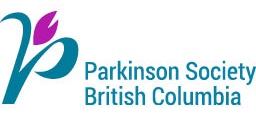Swallowing Difficulties in Parkinson’s Disease
Nearly all people with Parkinson’s (PD) develop some degree of difficulty swallowing, which can present itself at any stage of the disease. The term that is used for swallowing dysfunction is dysphagia. This symptom can make eating, drinking, and socializing less pleasurable, and affect overall health, nutrition, and quality of life. It can also result in food, liquid, or saliva entering the lungs, in a process called aspiration. Repeated episodes of aspiration can lead to aspiration pneumonia, the primary cause of death for people with PD.
Causes and Symptoms
In the same way that PD causes slowness, rigidity, tremor, and difficulty with initiating movement throughout the muscles in your body, it can do the same to the muscles involved in swallowing. The phases of swallowing include the oral phase (food preparation/chewing), the pharyngeal phase (moving food from the mouth to the esophagus), and the esophageal phase (movement of food to the stomach). You may experience one or more of the following symptoms of swallowing problems at varying levels of severity:
- coughing or clearing your throat during meals
- choking
- pain while swallowing
- difficulty moving food or liquid from the front of the mouth to the back
- loss of liquid or food from the front of the mouth
- drooling
- increased time required to eat a meal
- feeling food sticking in the throat
- increased difficulty swallowing pills
- wet or gurgling voice quality during or after eating
- weakened cough or changes in voice
- unexplained weight loss
- change in dietary habits
- nasal regurgitation, when swallowed food enters the nose
High Risk Swallowing Concern – Silent Aspiration
Silent aspiration occurs when food or liquid (including your own saliva) enter the lungs without any outward signs or symptoms, such as coughing. Silent aspiration can occur secondary to problems associated with the swallowing mechanism, such as decreased sensation, slowed motor function, general weakness, decreased coordination, and weak or absent cough. Symptoms of silent aspiration can include, but are not limited to: wet sounding voice with eating, absence of coughing or throat clearing, chest congestion, fever, and pneumonia.
Evaluation and Treatment
Swallowing difficulty should be evaluated by an experienced Speech-Language Pathologist (SLP). People with Parkinson’s may benefit from participation in a videofluoroscopic swallowing study (also referred to as a Modified Barium Swallow), which is a video x-ray that examines all phases of swallowing. Throughout the MBS procedure, you will be asked to consume diverse textures, like pudding, water, milk, cookies, a barium pill, or specific challenging food items. X-ray footage will capture your chewing and swallowing actions. The SLP will review the video, evaluating both the structure and function of your swallowing process and identifying any potential aspiration or risk. Every stage of swallowing — oral, pharyngeal, and esophageal — can undergo assessment during the MBS.
There is another study called a Flexible Endoscopic Evaluation of Swallowing, which does not require radiation exposure. This procedure enables direct observation of the pharynx and larynx while swallowing liquids and solids. It involves inserting an extremely thin, flexible fiberoptic tube through the nasal passage, connected to a camera and light source, enabling video and audio recording. The Speech-Language Pathologist assesses the pharyngeal phase of swallowing, noting any signs of aspiration or risk.
Such studies will help the SLP create a safe swallowing program specific to the concerns with your swallowing. Swallowing treatment plans are highly individual, and should be created specifically for you, following evaluation. Treating swallowing problems can include rehabilitative exercises and/or compensatory strategies.
Discuss any eating and swallowing difficulties with your physician and request a referral to a SLP for evaluation and treatment of your symptoms or concerns.
Self-Help for Swallowing
To manage or prevent swallowing difficulties, try the following strategies:
- Eat in an environment free from distraction.
- Cut your food into small pieces before chewing.
- Consider eating foods that are easier to swallow for you.
- Always eat sitting upright, at 90 degrees.
- Remain upright for at least 45 minutes after eating.
- To avoid the effects of fatigue, try to eat 5 small meals instead of 3 large meals.
- Chew thoroughly. Discuss any changes to your teeth or dentures with your dentist.
- Alternate liquids and solids. Do not wash down food.
- Eat when you are at your best, during medication “on” times.
- Do not ignore symptoms of a swallowing disorder – speak to your physician as soon as you notice changes in your ability to swallow.
This help sheet was prepared in collaboration with Sherri Zelazny, Registered Speech-Language Pathologist.
Last updated: January 9, 2024
